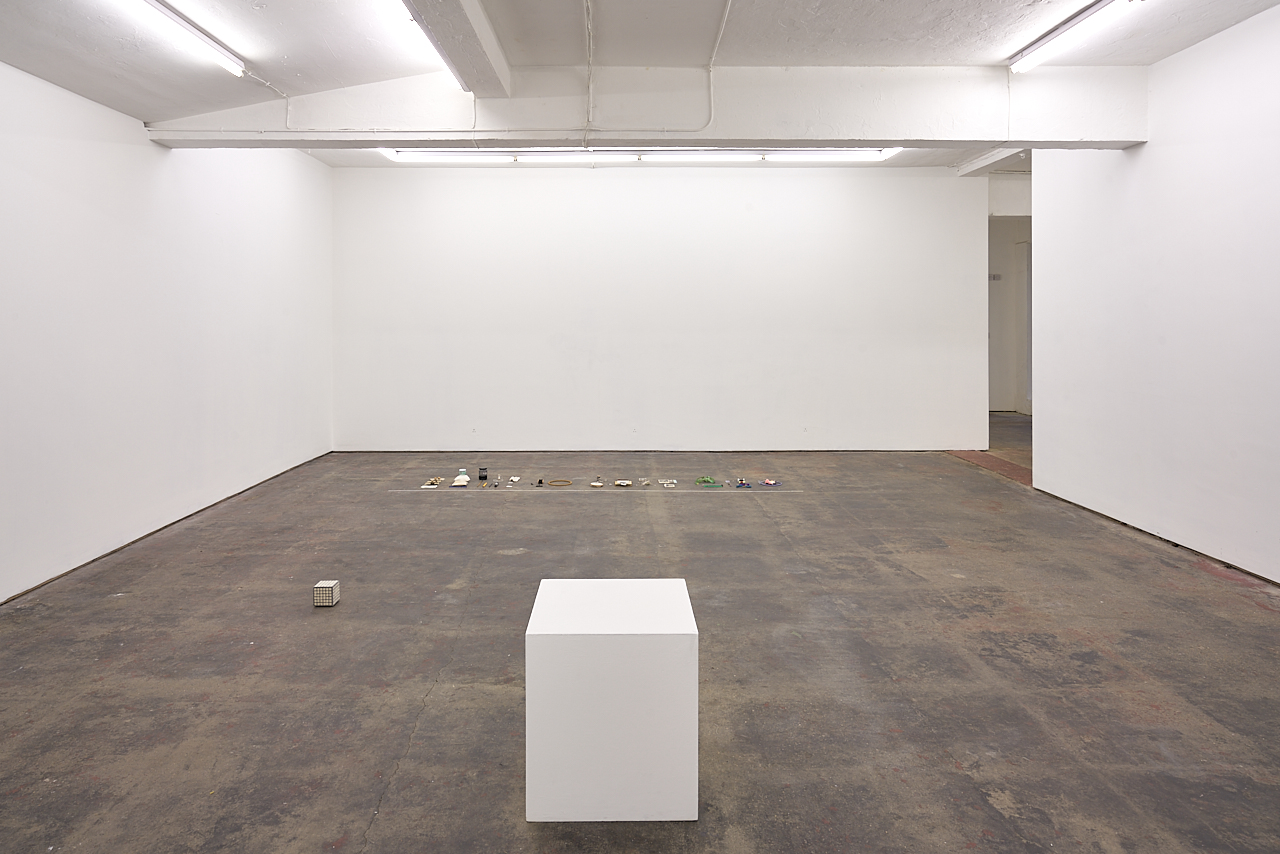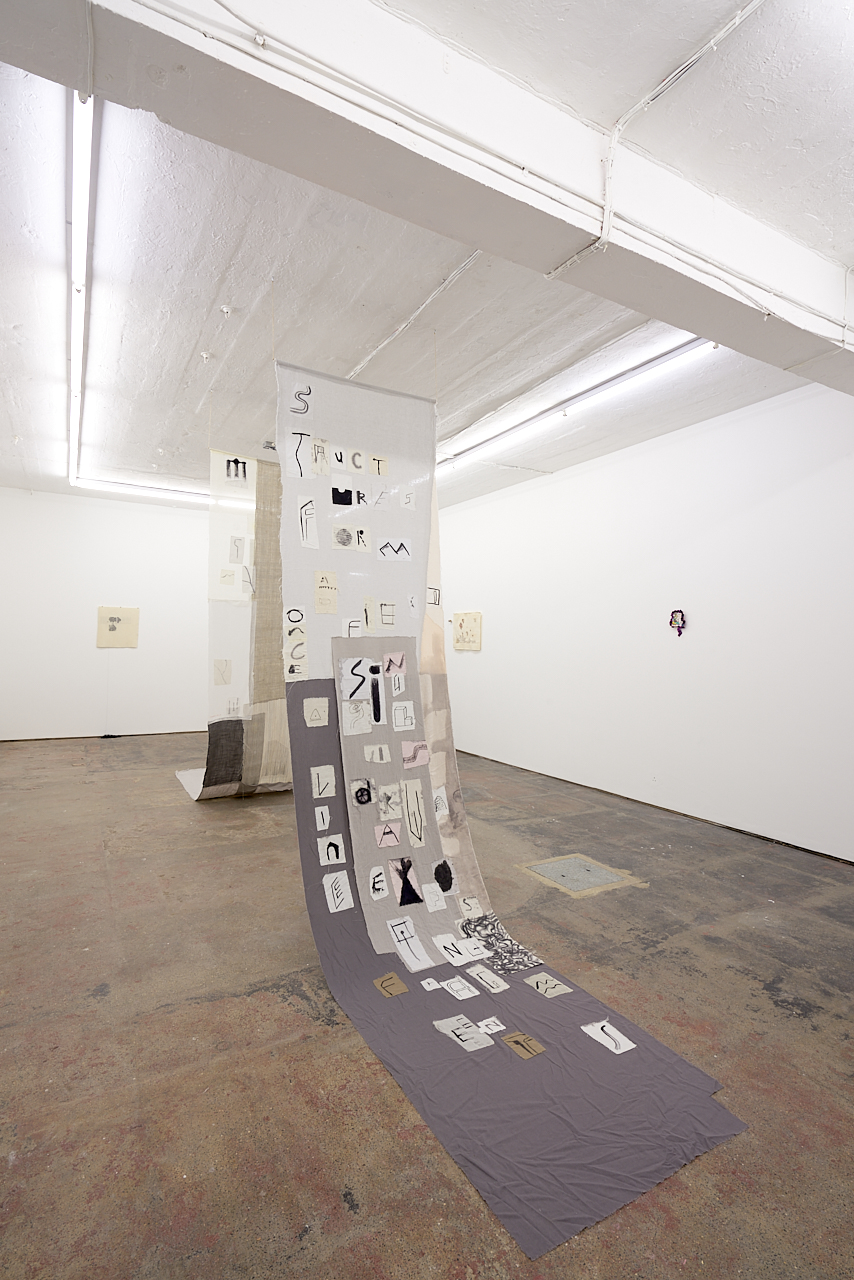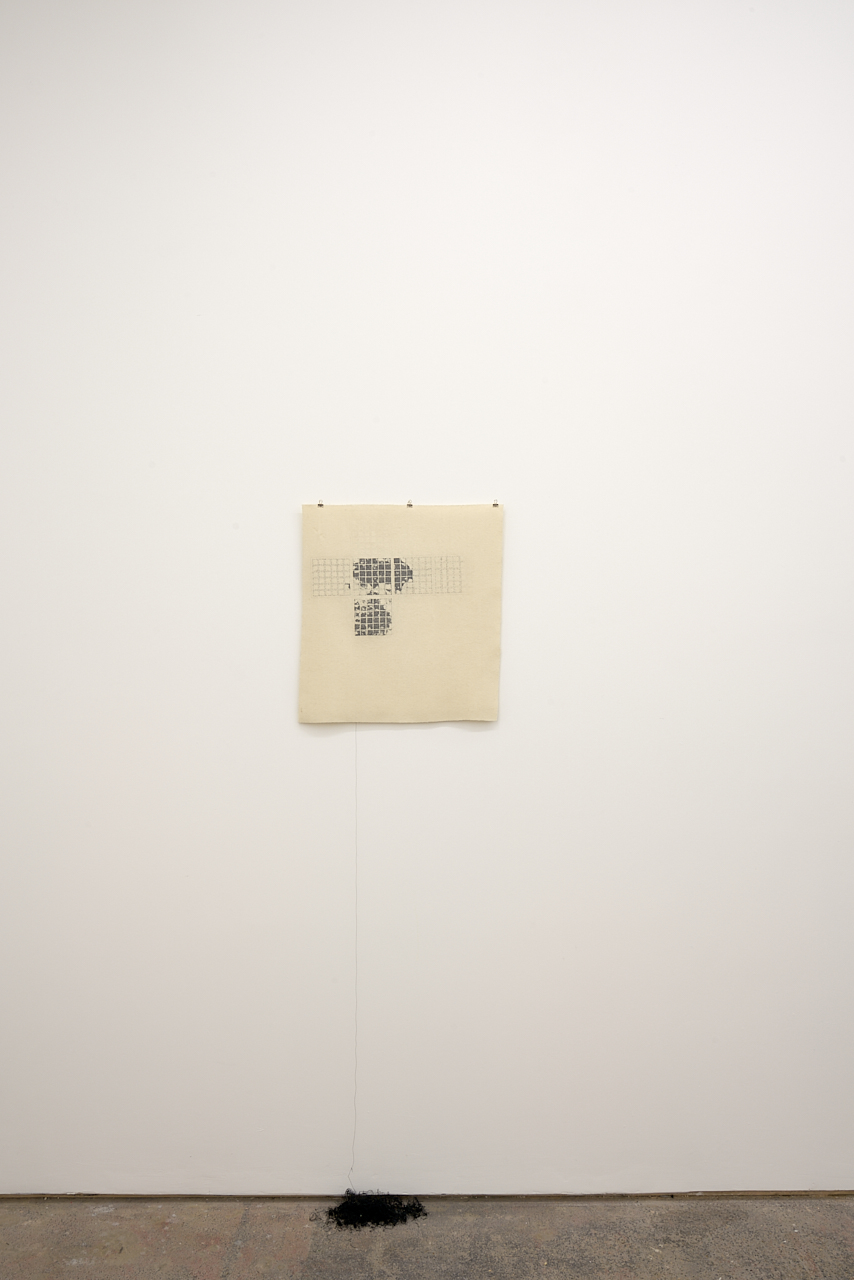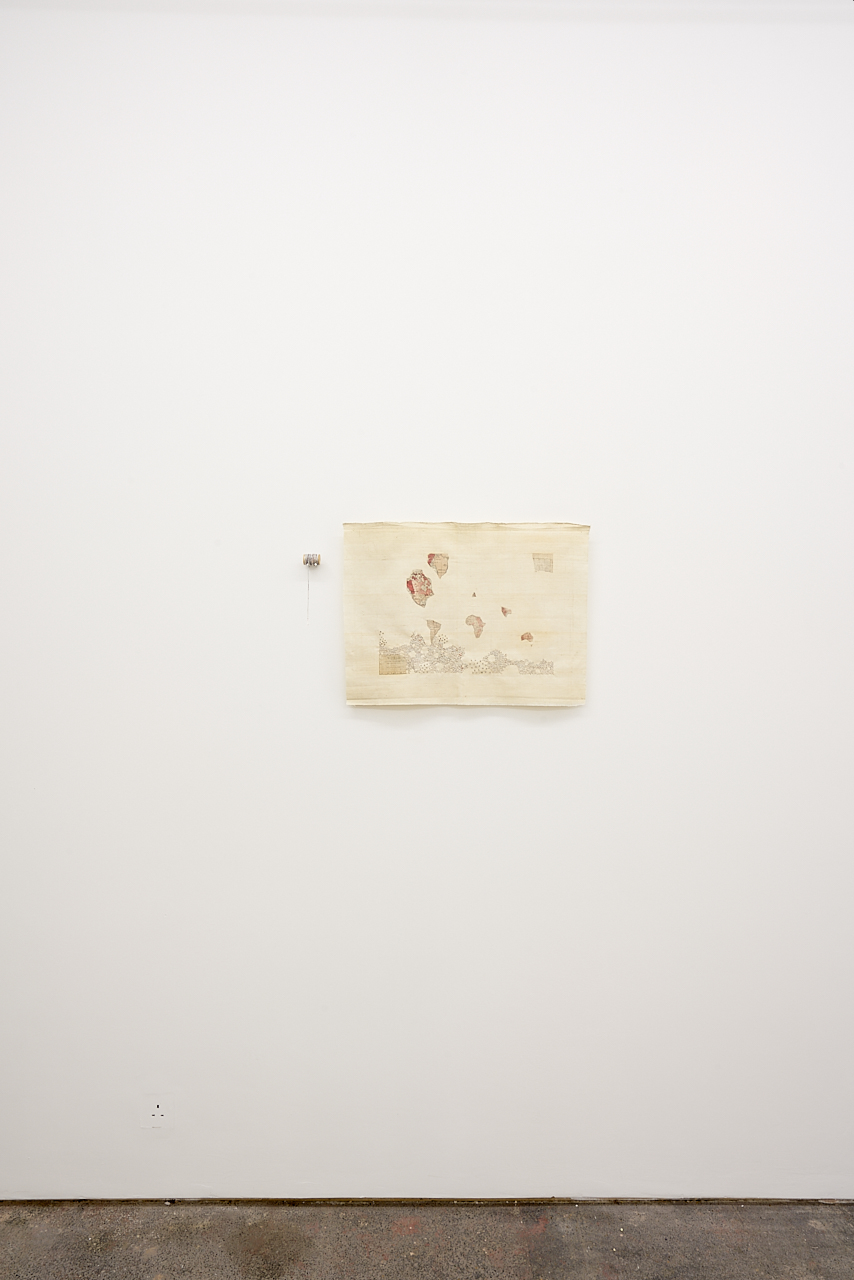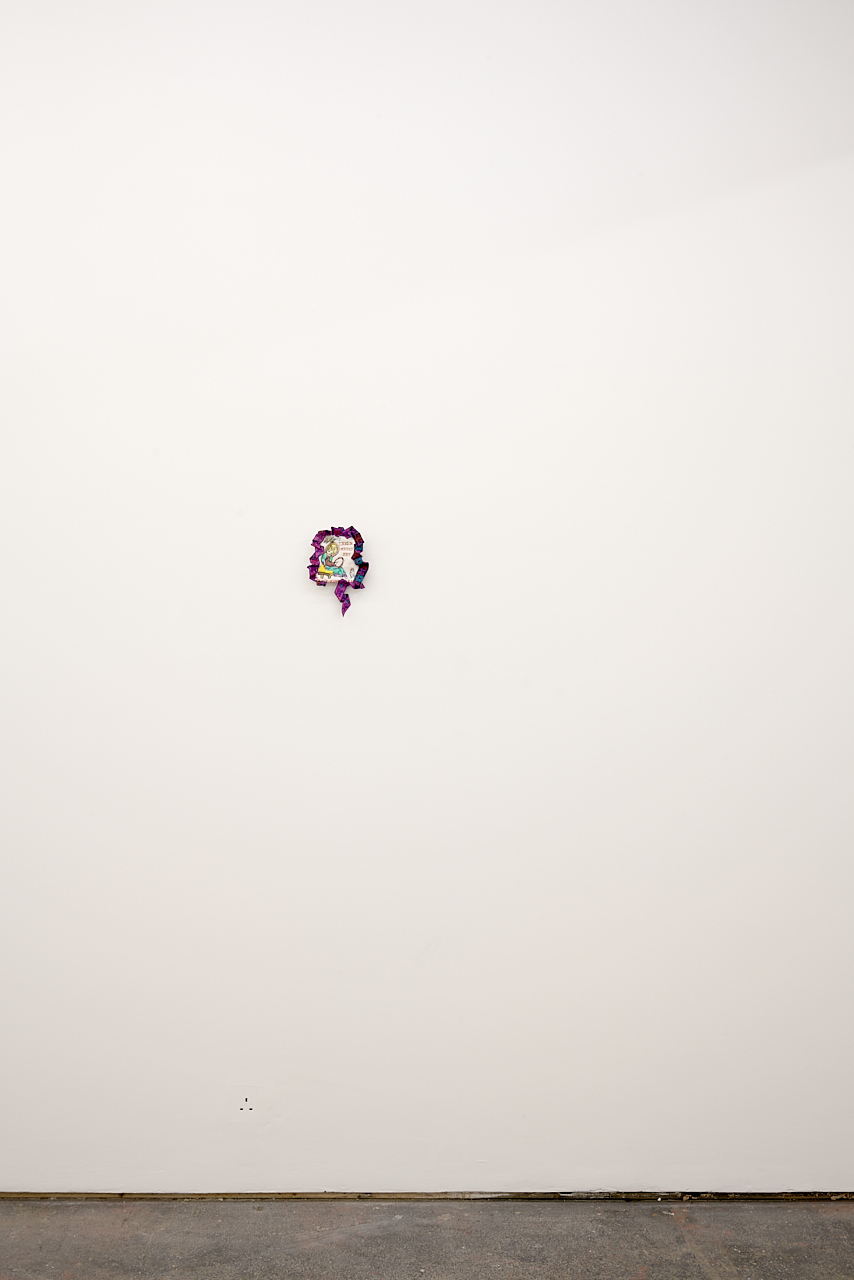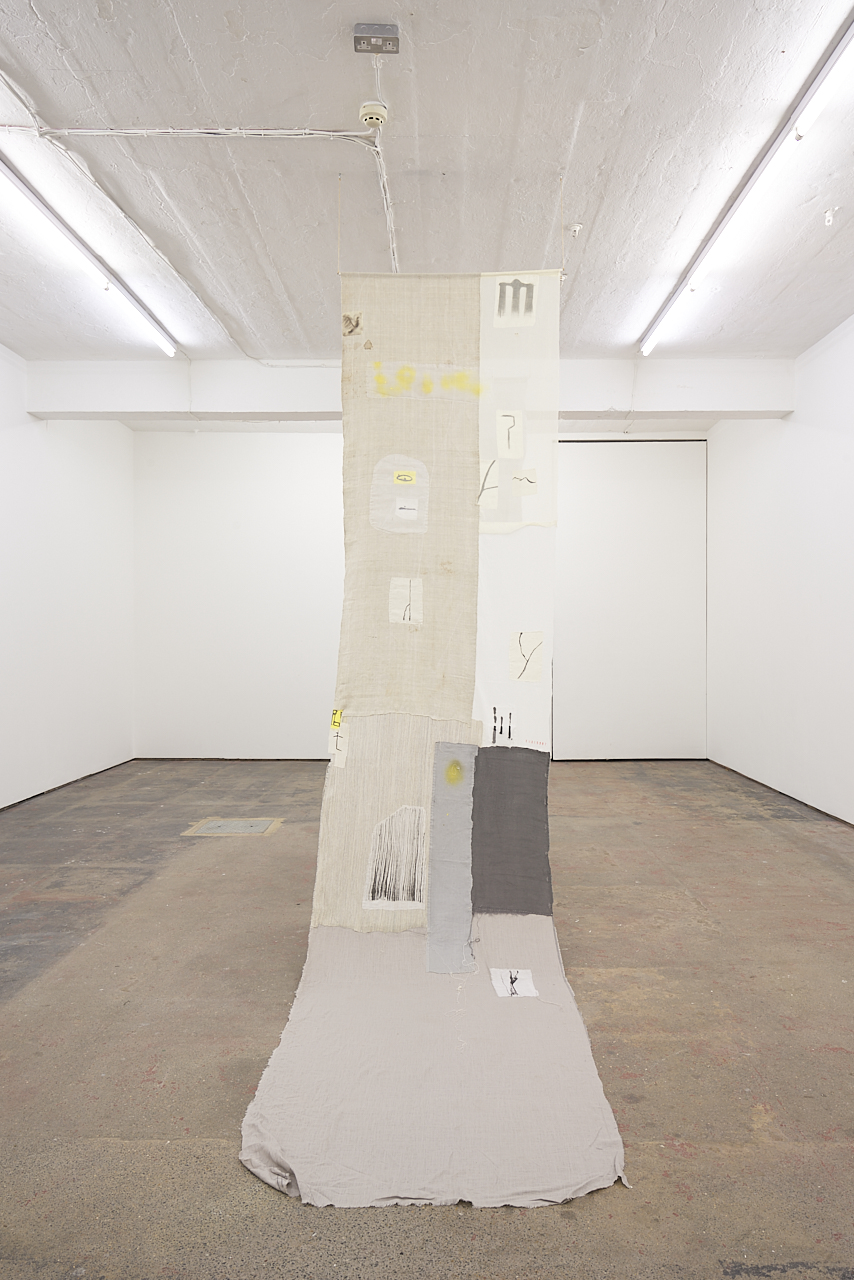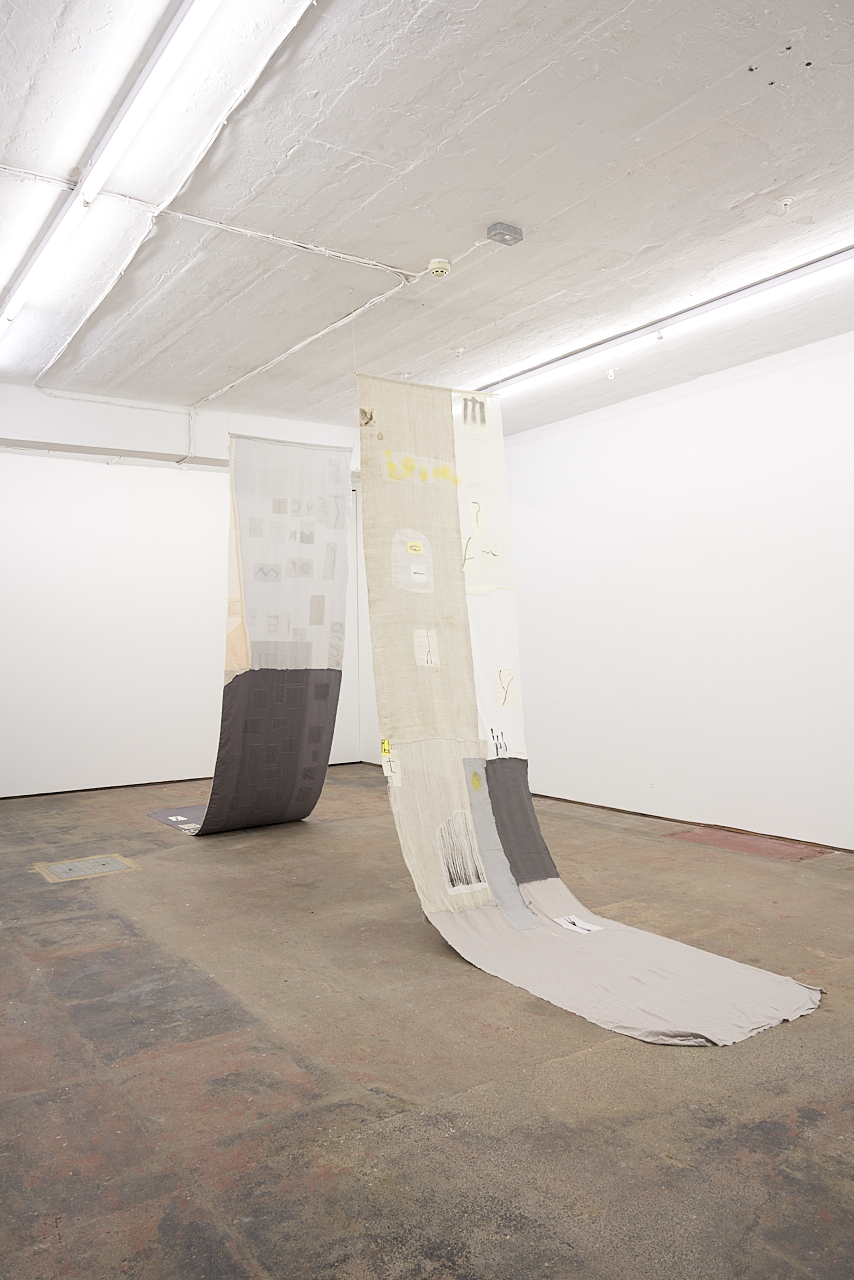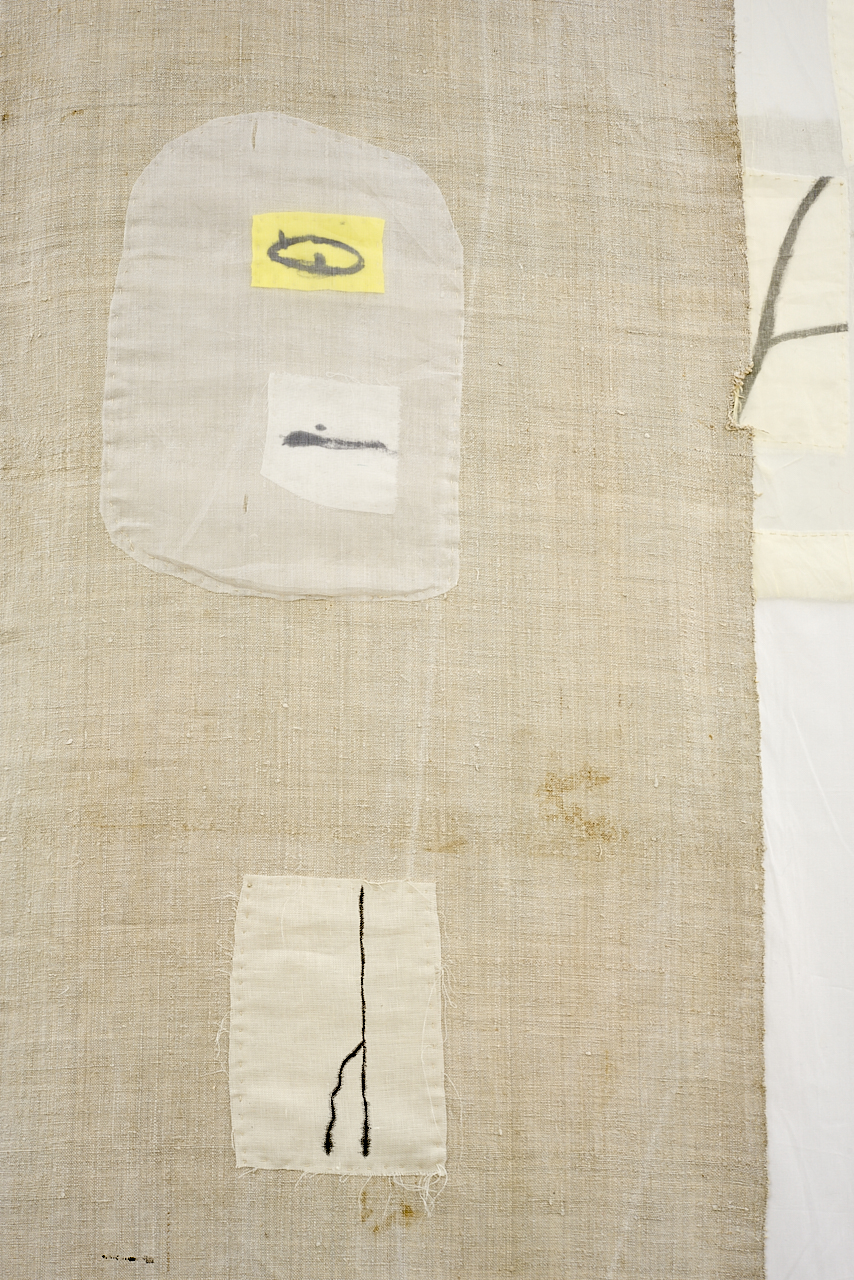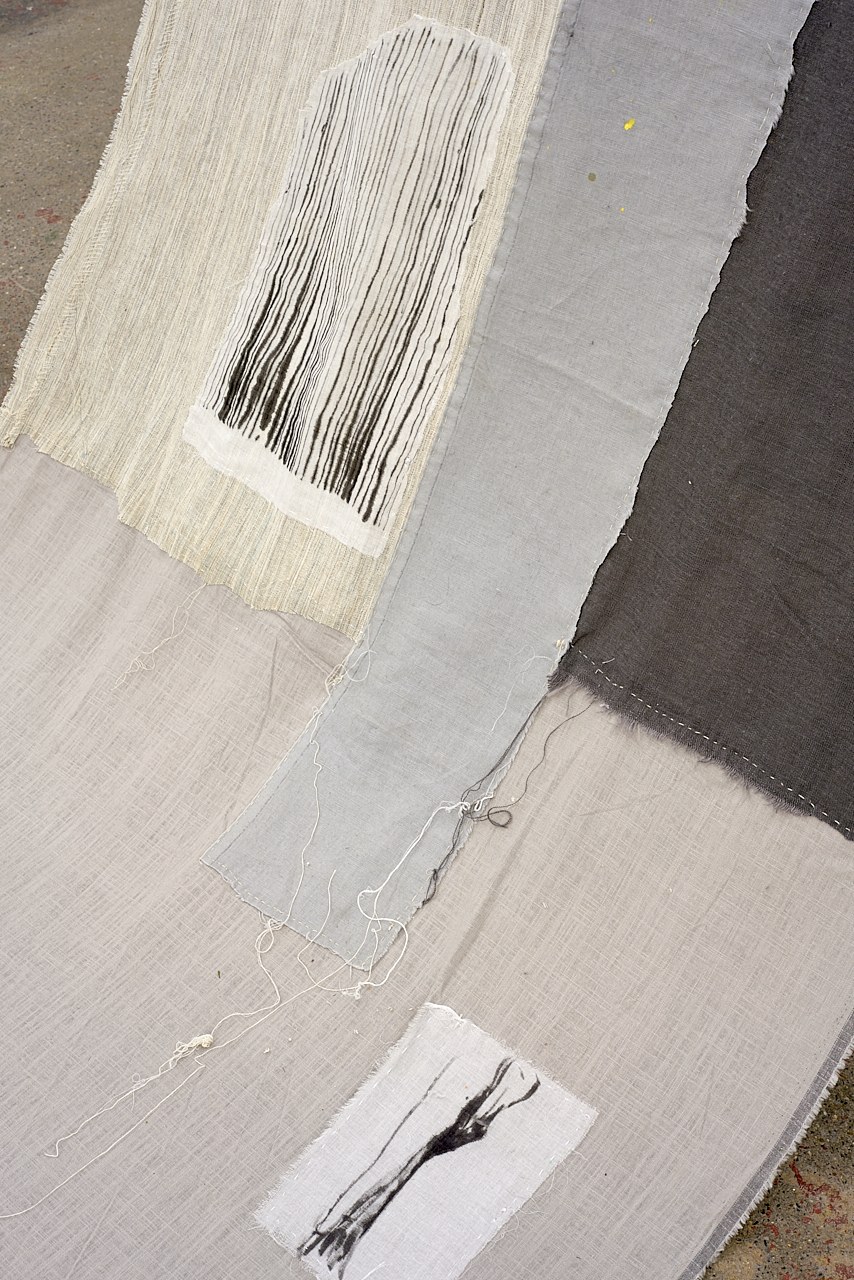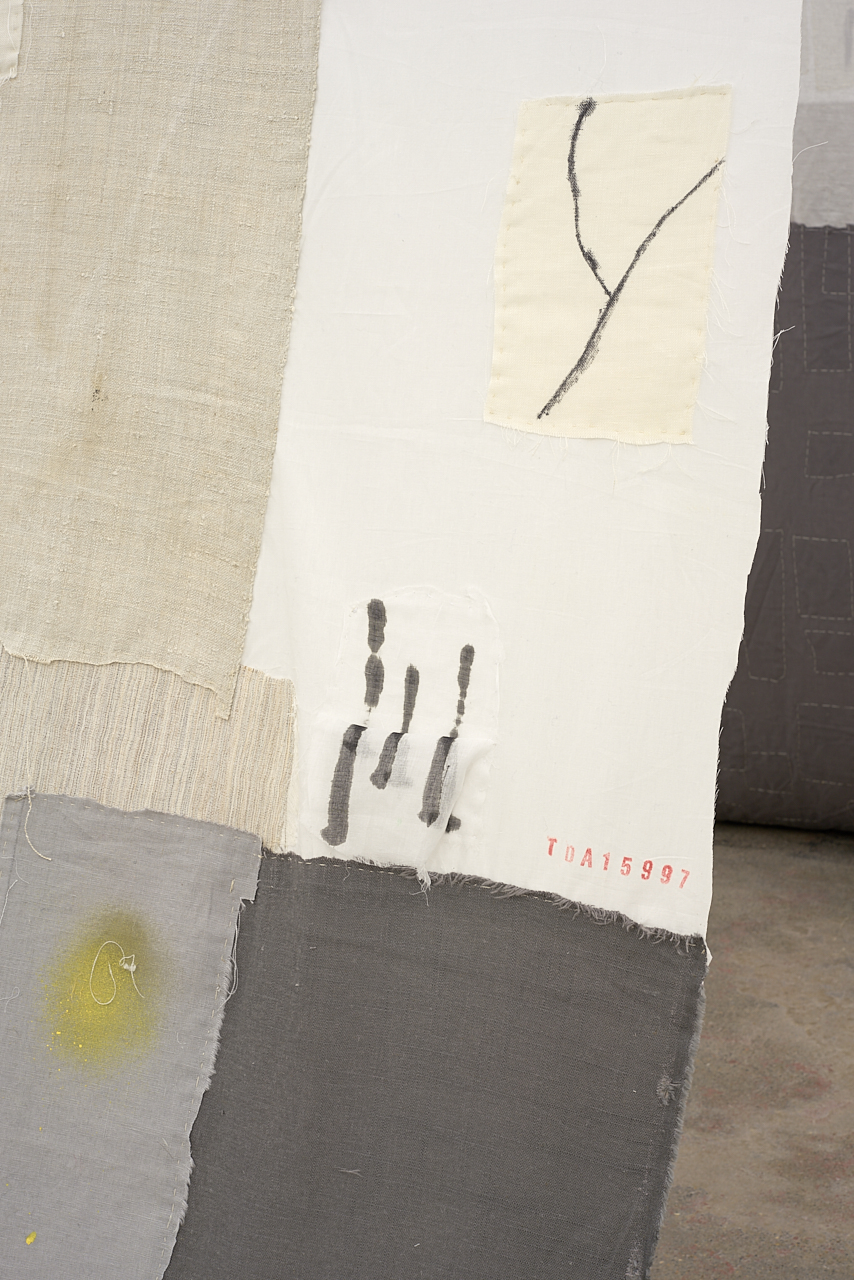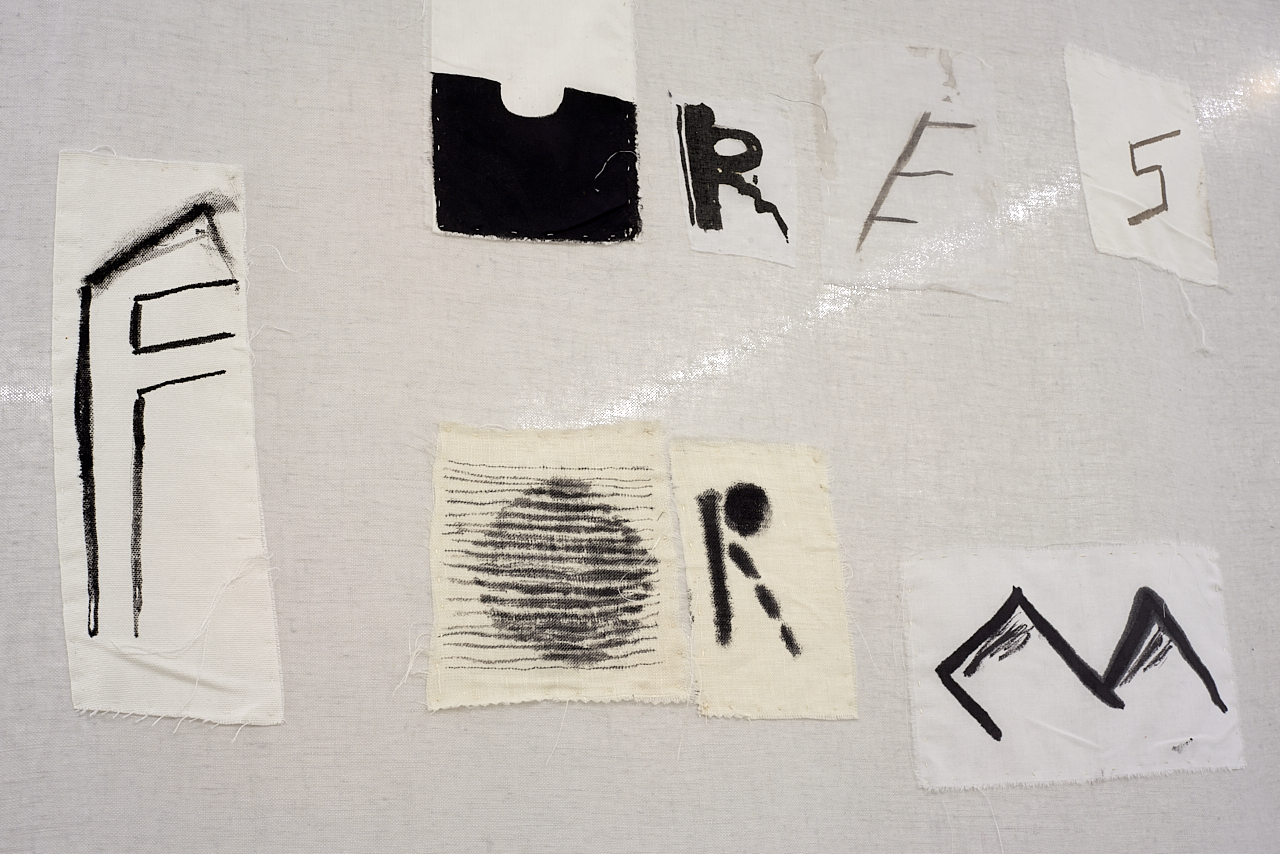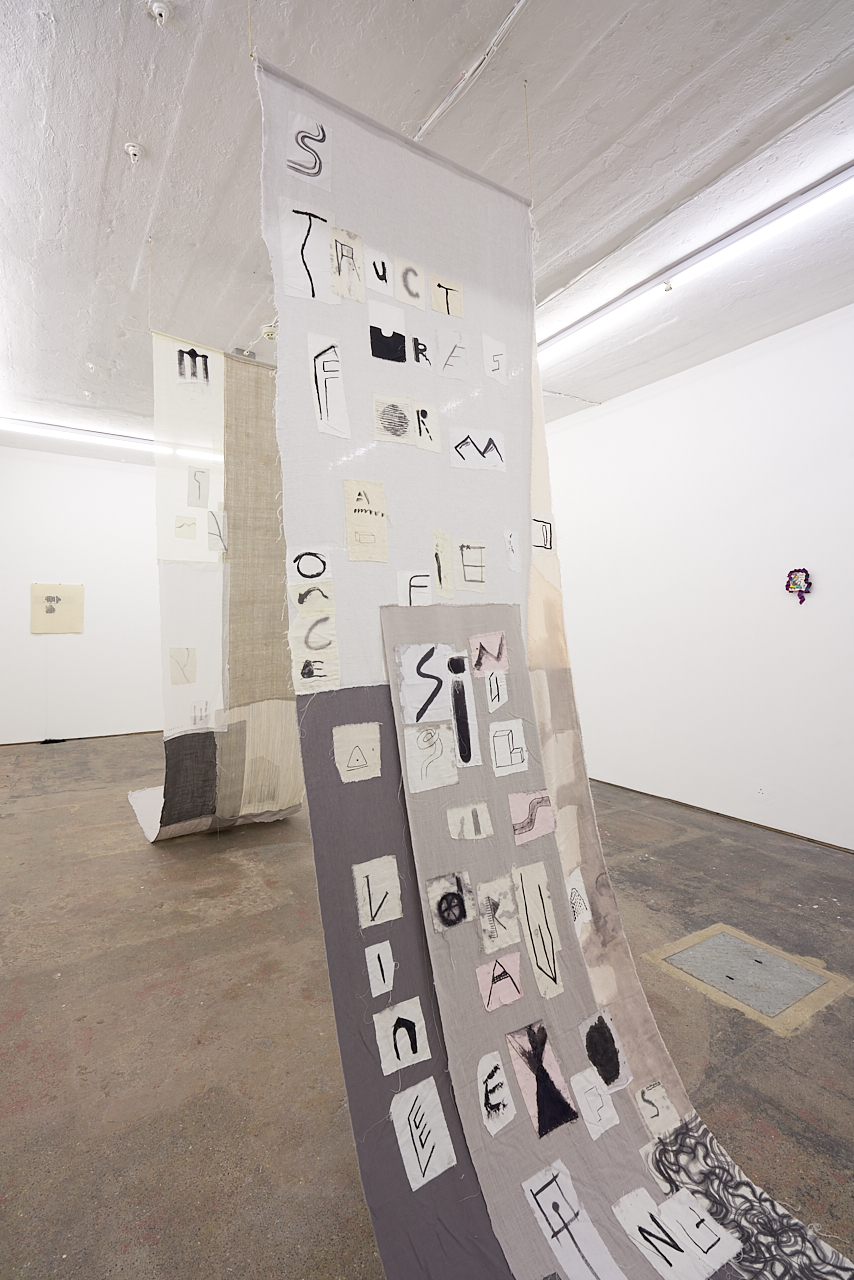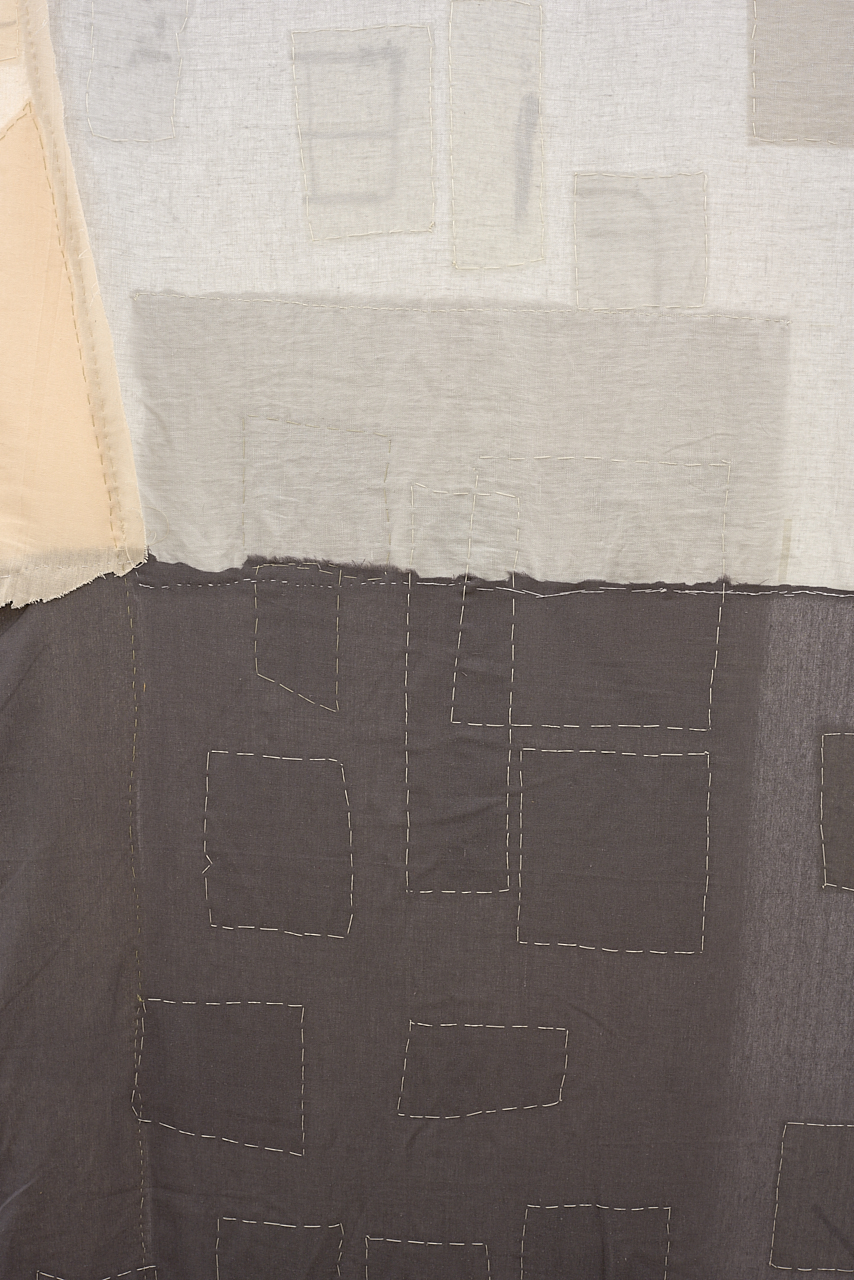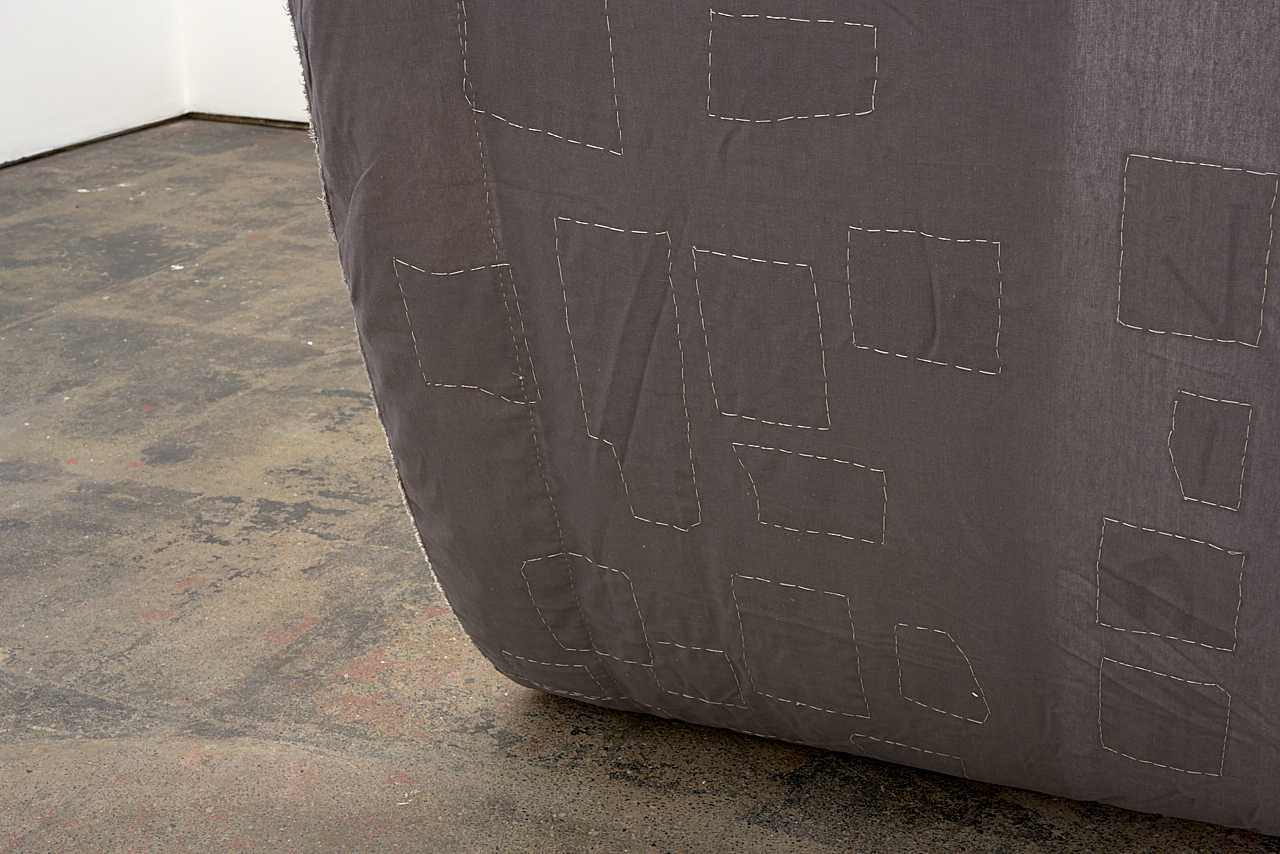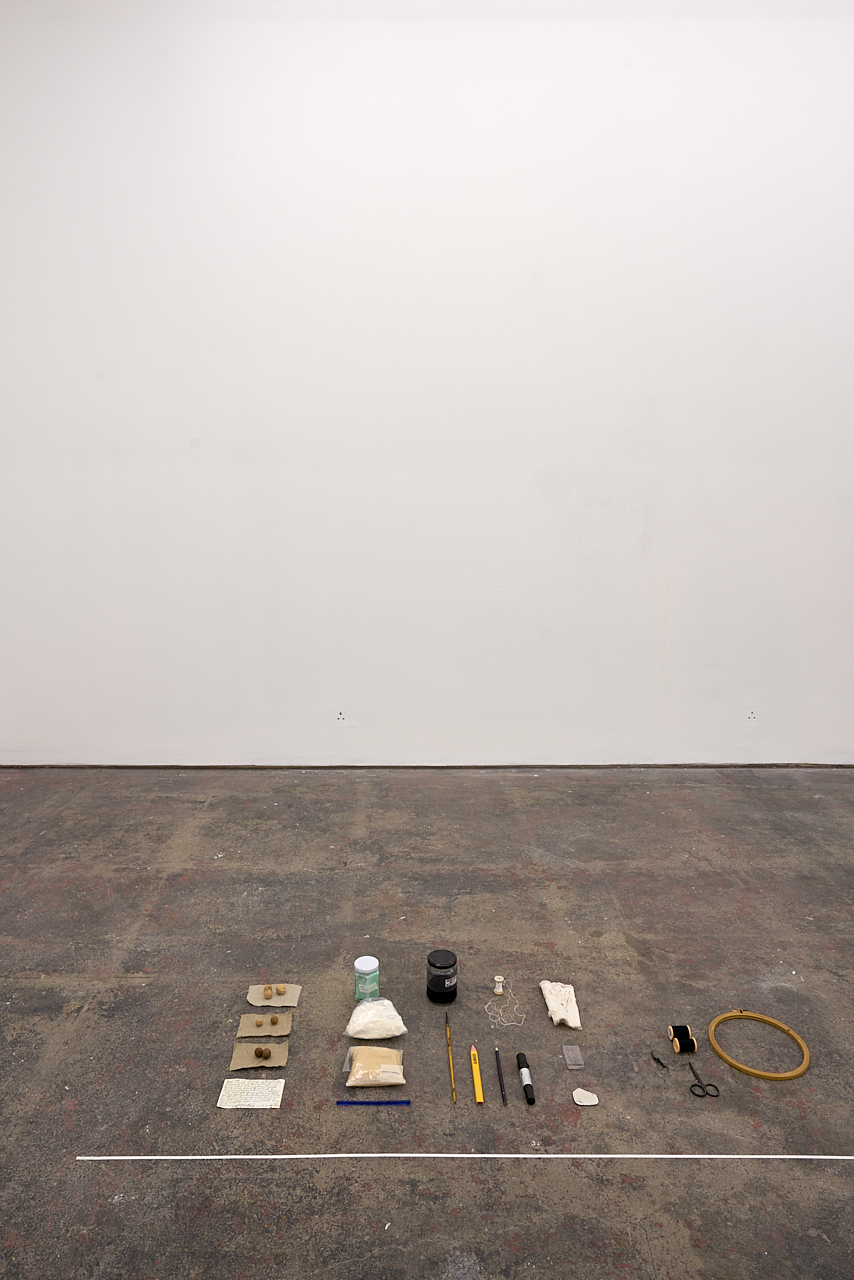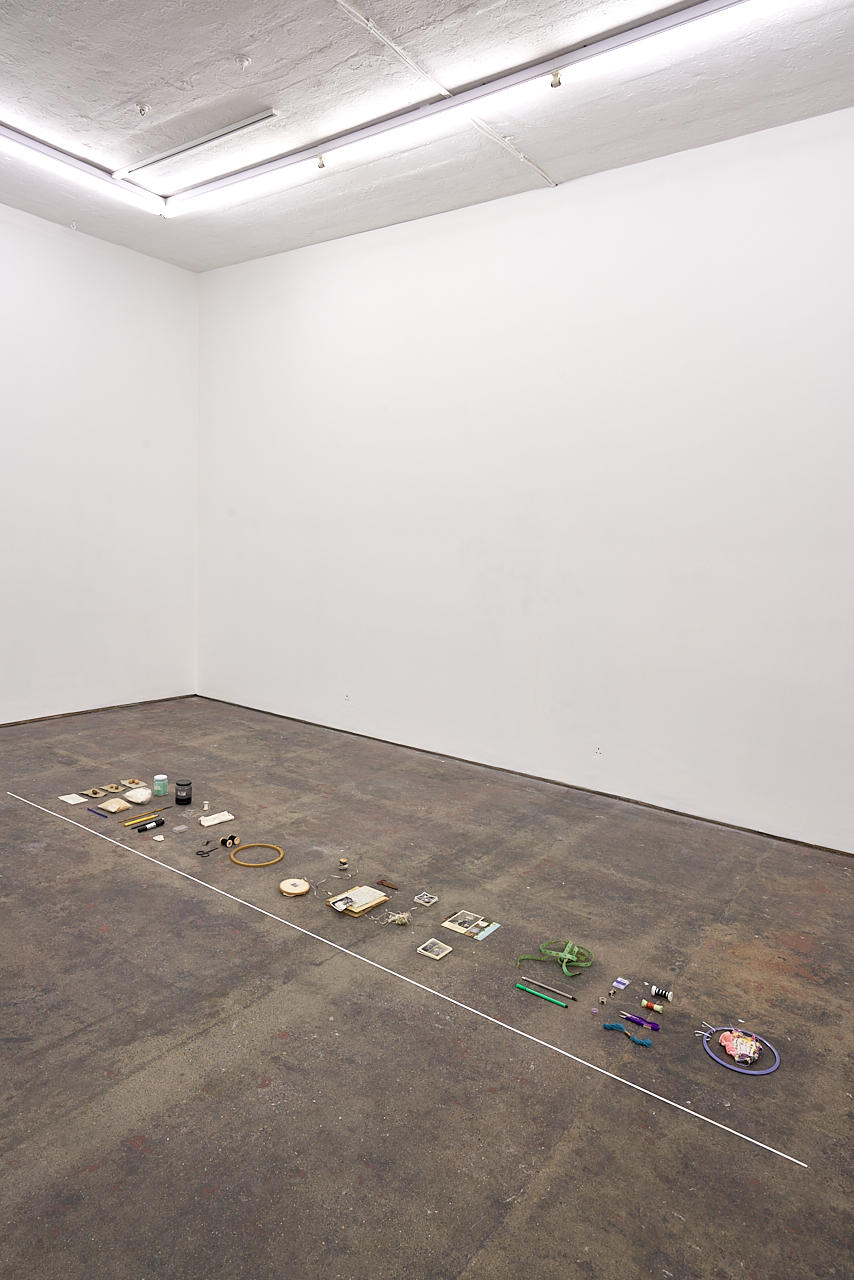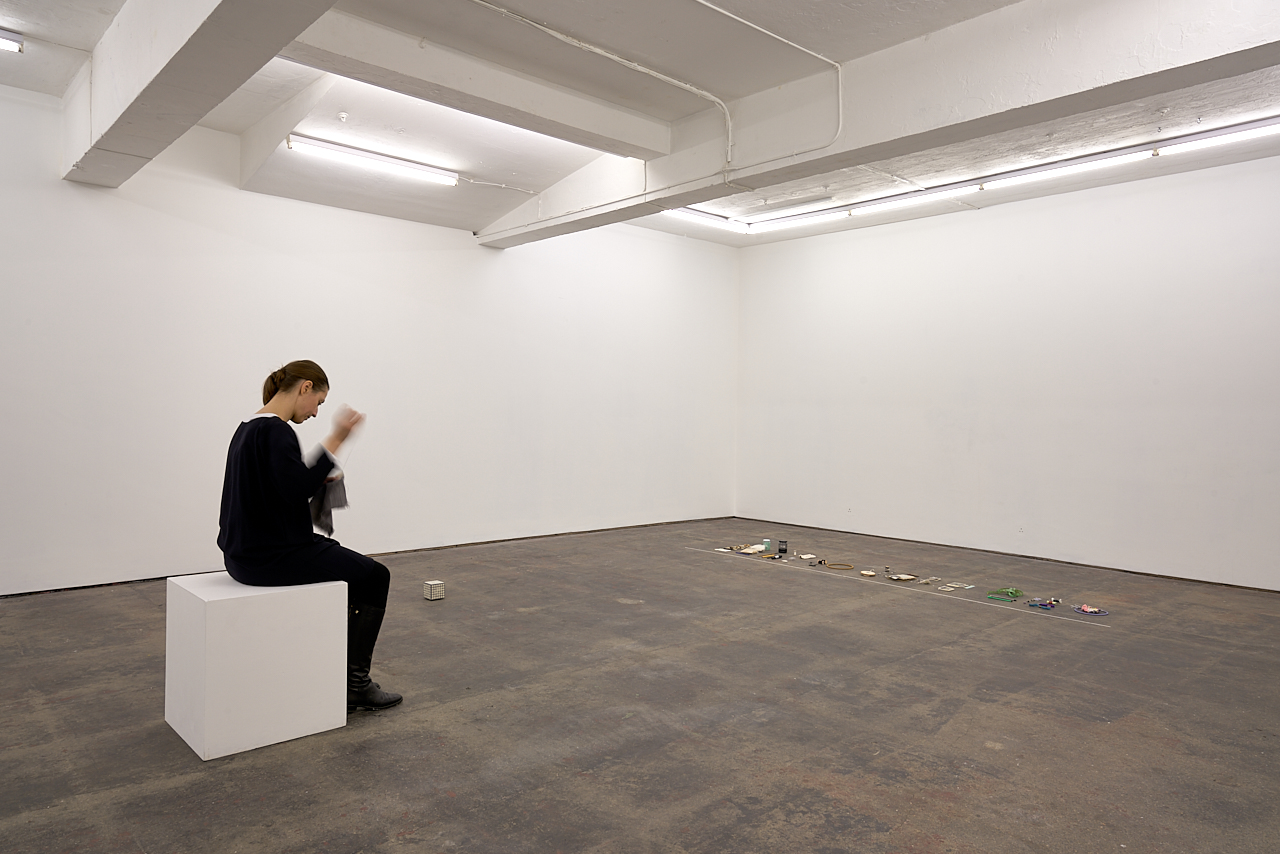Room I: The Performance, The Objects
The Performance
Artists performing their work is on show as a way to slowly pull one’s mind into the intimate and focused state of making itself. As one sees a repetitive action an artefact is being produced. It is hard but try to stop wondering about how it will ‘sit’ in the big world of retail.
The Objects
Displayed objects are actual work tools used by artists in the show and during the performance but they also are objects simply available in shops to buy. The difference is the value, in this case they are more valuable because of having had a particular use. Objects as tools are essential but do we need retail spaces of the size of the cities in order to obtain them?
Room II
(left to right)
Grid by Richard McVetis. Hand embroidery on wool, w100 x h100mm
In the context of this exhibition, which probes the concept of retail world itself, McVetis’s piece strictly reminds us of all aspects related to time and particularly to speed. For this show his work exposes intricately hand-made individual stitches as if marking the time it takes to make the piece as opposed to the current speedy wholesale retail.
Letters & Markers by Neringa Dastoor. Oak gall ink on mixed textiles, w1000 x h4000mm
Dastoor’s piece is composed of drawings made by public and opens up a debate on the aspect of community. More than ever before social media proves that humans first and foremost are socially engaged species. However, in today’s society the world of retail seems to be playing the primary role instead, acting as a driving force for socially engaged community life. Paid advert boards online expose only fragments of the scale of retail altogether, never mind the power of it over our lived experiences. Dastoor’s piece celebrates the notion of anyone and everyone being able to stay actively involved. Community-created art may not change the world but it produces an artwork that triggers individual responses.
Our World Our Making by Archana Pathak. Old map, print, hand embroidery, w500 x h350mm
Pathak’s work here discloses the ‘emotional world’ of spaces through their connection to our own selves. Her work in progress piece is that of an old British colonial map, it subtly examines how allocated boundaries have been shifting in time. By using a bare minimum tool stitch which recreates an image she generates a sense of belonging; she also draws attention to ‘our world, our making’ as if shredding our stereotypical perception.
Labour Makes Art by YiMiao Shih. Embroidery, paint, goldwork, vintage thread, assorted textiles, w90 x h140mm
Shih brings out the lighter and brighter (happy!) side in this exhibition. Her suggested object which appears to be a badge is a thought provoking summary, a celebration of how divinely happy retail makes us by entertaining us with roads and cities of shopping centres. One could say Shih caught the ‘spirit’ of retail in this somewhat logotype like, somewhat brand like in its own way badge. As an object Shih artwork is large (L) for a badge but extra small (or size zero?) for an object in this gallery space, making it feel empty and deserted as opposed to the packed shelves in shops.
Grid by Richard McVetis. Hand embroidery on wool, w100 x h100mm
In the context of this exhibition, which probes the concept of retail world itself, McVetis’s piece strictly reminds us of all aspects related to time and particularly to speed. For this show his work exposes intricately hand-made individual stitches as if marking the time it takes to make the piece as opposed to the current speedy wholesale retail.
Our World Our Making by Archana Pathak. Old map, print, hand embroidery, w500 x h350mm
Pathak’s work here discloses the ‘emotional world’ of spaces through their connection to our own selves. Her work in progress piece is that of an old British colonial map, it subtly examines how allocated boundaries have been shifting in time. By using a bare minimum tool stitch which recreates an image she generates a sense of belonging; she also draws attention to ‘our world, our making’ as if shredding our stereotypical perception.
Labour Makes Art by YiMiao Shih. Embroidery, paint, goldwork, vintage thread, assorted textiles, w90 x h140mm
Shih brings out the lighter and brighter (happy!) side in this exhibition. Her suggested object which appears to be a badge is a thought provoking summary, a celebration of how divinely happy retail makes us by entertaining us with roads and cities of shopping centres. One could say Shih caught the ‘spirit’ of retail in this somewhat logotype like, somewhat brand like in its own way badge. As an object Shih artwork is large (L) for a badge but extra small (or size zero?) for an object in this gallery space, making it feel empty and deserted as opposed to the packed shelves in shops.
Letters & Markers by Neringa Dastoor. Oak gall ink on mixed textiles, w1000 x h4000mm
Dastoor’s piece is composed of drawings made by public and opens up a debate on the aspect of community. More than ever before social media proves that humans first and foremost are socially engaged species. However, in today’s society the world of retail seems to be playing the primary role instead, acting as a driving force for socially engaged community life. Paid advert boards online expose only fragments of the scale of retail altogether, never mind the power of it over our lived experiences. Dastoor’s piece celebrates the notion of anyone and everyone being able to stay actively involved. Community-created art may not change the world but it produces an artwork that triggers individual responses.
Letters & Markers by Neringa Dastoor. Oak gall ink on mixed textiles, w1000 x h4000mm
Dastoor’s piece is composed of drawings made by public and opens up a debate on the aspect of community. More than ever before social media proves that humans first and foremost are socially engaged species. However, in today’s society the world of retail seems to be playing the primary role instead, acting as a driving force for socially engaged community life. Paid advert boards online expose only fragments of the scale of retail altogether, never mind the power of it over our lived experiences. Dastoor’s piece celebrates the notion of anyone and everyone being able to stay actively involved. Community-created art may not change the world but it produces an artwork that triggers individual responses.
Letters & Markers by Neringa Dastoor (detail)
Dastoor’s piece is composed of drawings made by public and opens up a debate on the aspect of community. More than ever before social media proves that humans first and foremost are socially engaged species. However, in today’s society the world of retail seems to be playing the primary role instead, acting as a driving force for socially engaged community life. Paid advert boards online expose only fragments of the scale of retail altogether, never mind the power of it over our lived experiences. Dastoor’s piece celebrates the notion of anyone and everyone being able to stay actively involved. Community-created art may not change the world but it produces an artwork that triggers individual responses.
Letters & Markers by Neringa Dastoor (detail)
Dastoor’s piece is composed of drawings made by public and opens up a debate on the aspect of community. More than ever before social media proves that humans first and foremost are socially engaged species. However, in today’s society the world of retail seems to be playing the primary role instead, acting as a driving force for socially engaged community life. Paid advert boards online expose only fragments of the scale of retail altogether, never mind the power of it over our lived experiences. Dastoor’s piece celebrates the notion of anyone and everyone being able to stay actively involved. Community-created art may not change the world but it produces an artwork that triggers individual responses.
Letters & Markers by Neringa Dastoor (detail)
Dastoor’s piece is composed of drawings made by public and opens up a debate on the aspect of community. More than ever before social media proves that humans first and foremost are socially engaged species. However, in today’s society the world of retail seems to be playing the primary role instead, acting as a driving force for socially engaged community life. Paid advert boards online expose only fragments of the scale of retail altogether, never mind the power of it over our lived experiences. Dastoor’s piece celebrates the notion of anyone and everyone being able to stay actively involved. Community-created art may not change the world but it produces an artwork that triggers individual responses.
Letters & Markers by Neringa Dastoor (detail)
Dastoor’s piece is composed of drawings made by public and opens up a debate on the aspect of community. More than ever before social media proves that humans first and foremost are socially engaged species. However, in today’s society the world of retail seems to be playing the primary role instead, acting as a driving force for socially engaged community life. Paid advert boards online expose only fragments of the scale of retail altogether, never mind the power of it over our lived experiences. Dastoor’s piece celebrates the notion of anyone and everyone being able to stay actively involved. Community-created art may not change the world but it produces an artwork that triggers individual responses.
Letters & Markers by Neringa Dastoor (detail)
Dastoor’s piece is composed of drawings made by public and opens up a debate on the aspect of community. More than ever before social media proves that humans first and foremost are socially engaged species. However, in today’s society the world of retail seems to be playing the primary role instead, acting as a driving force for socially engaged community life. Paid advert boards online expose only fragments of the scale of retail altogether, never mind the power of it over our lived experiences. Dastoor’s piece celebrates the notion of anyone and everyone being able to stay actively involved. Community-created art may not change the world but it produces an artwork that triggers individual responses.
Letters & Markers by Neringa Dastoor (detail)
Dastoor’s piece is composed of drawings made by public and opens up a debate on the aspect of community. More than ever before social media proves that humans first and foremost are socially engaged species. However, in today’s society the world of retail seems to be playing the primary role instead, acting as a driving force for socially engaged community life. Paid advert boards online expose only fragments of the scale of retail altogether, never mind the power of it over our lived experiences. Dastoor’s piece celebrates the notion of anyone and everyone being able to stay actively involved. Community-created art may not change the world but it produces an artwork that triggers individual responses.
Letters & Markers by Neringa Dastoor (detail)
Dastoor’s piece is composed of drawings made by public and opens up a debate on the aspect of community. More than ever before social media proves that humans first and foremost are socially engaged species. However, in today’s society the world of retail seems to be playing the primary role instead, acting as a driving force for socially engaged community life. Paid advert boards online expose only fragments of the scale of retail altogether, never mind the power of it over our lived experiences. Dastoor’s piece celebrates the notion of anyone and everyone being able to stay actively involved. Community-created art may not change the world but it produces an artwork that triggers individual responses.
Room I, The Objects (detail)
Displayed objects are actual work tools used by artists in the show and during the performance but they also are objects simply available in shops to buy. The difference is the value, in this case they are more valuable because of having had a particular use. Objects as tools are essential but do we need retail spaces of the size of the cities in order to obtain them?
Room I, The Objects
Displayed objects are actual work tools used by artists in the show and during the performance but they also are objects simply available in shops to buy. The difference is the value, in this case they are more valuable because of having had a particular use. Objects as tools are essential but do we need retail spaces of the size of the cities in order to obtain them?
Room I, The Performance
Artists performing their work is on show as a way to slowly pull one’s mind into the intimate and focused state of making itself. As one sees a repetitive action an artefact is being produced. It is hard but try to stop wondering about how it will ‘sit’ in the big world of retail.
